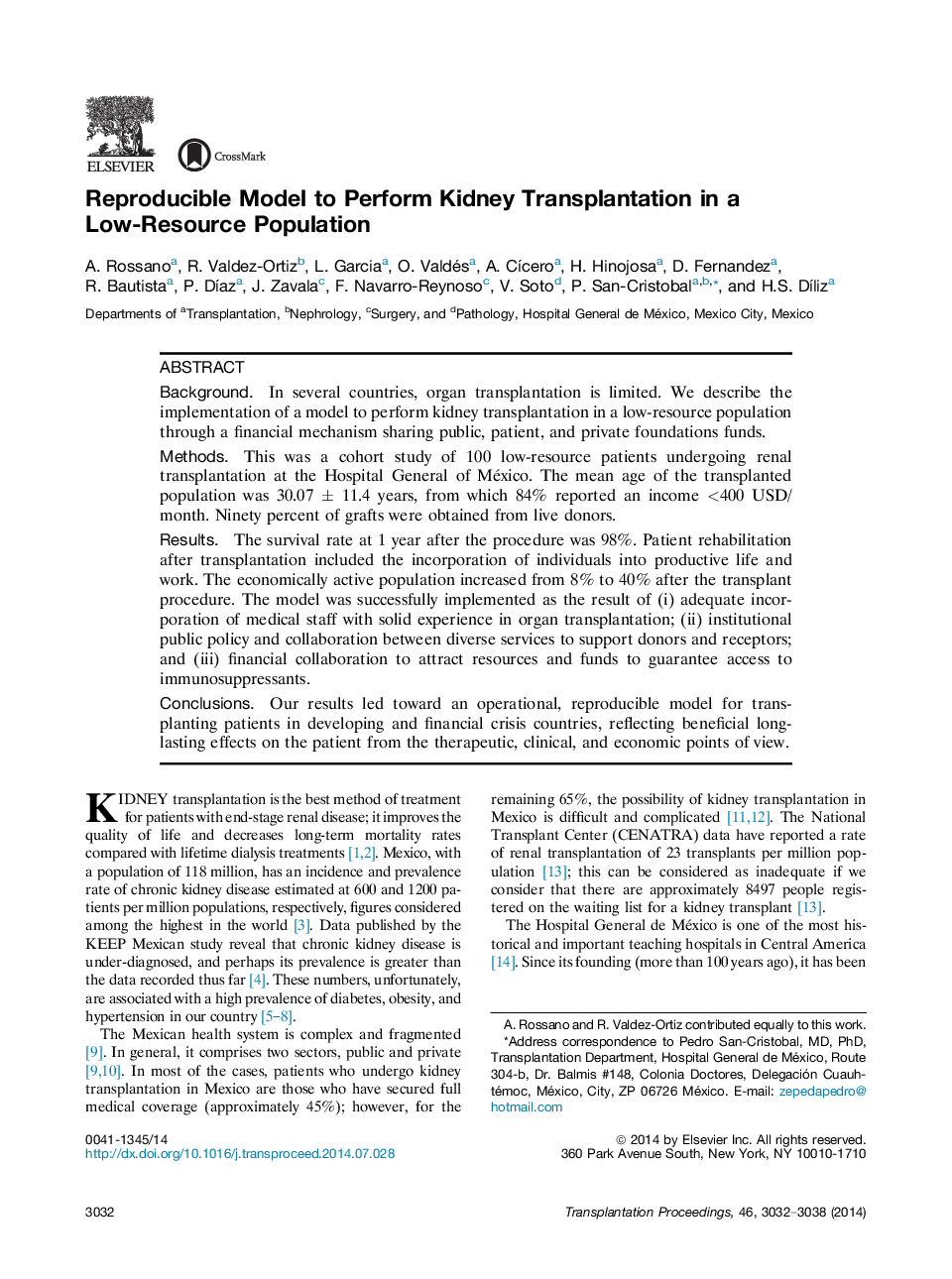| Article ID | Journal | Published Year | Pages | File Type |
|---|---|---|---|---|
| 4256608 | Transplantation Proceedings | 2014 | 7 Pages |
BackgroundIn several countries, organ transplantation is limited. We describe the implementation of a model to perform kidney transplantation in a low-resource population through a financial mechanism sharing public, patient, and private foundations funds.MethodsThis was a cohort study of 100 low-resource patients undergoing renal transplantation at the Hospital General of México. The mean age of the transplanted population was 30.07 ± 11.4 years, from which 84% reported an income <400 USD/month. Ninety percent of grafts were obtained from live donors.ResultsThe survival rate at 1 year after the procedure was 98%. Patient rehabilitation after transplantation included the incorporation of individuals into productive life and work. The economically active population increased from 8% to 40% after the transplant procedure. The model was successfully implemented as the result of (i) adequate incorporation of medical staff with solid experience in organ transplantation; (ii) institutional public policy and collaboration between diverse services to support donors and receptors; and (iii) financial collaboration to attract resources and funds to guarantee access to immunosuppressants.ConclusionsOur results led toward an operational, reproducible model for transplanting patients in developing and financial crisis countries, reflecting beneficial long-lasting effects on the patient from the therapeutic, clinical, and economic points of view.
